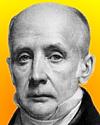
On 22 Mar 1768, Bryan Donkin was born, an English mechanical engineer who improved the Fourdrinier machine for making paper in continuous lengths.
His ingenuity extended in other directions: he also developed printing machinery and invented the composition roller used in printing. Donkin held other patents on gearing, steel pens, paper-making and railway wheels. He also worked on the preservation of food in airtight containers (1813), revolution counters and improved accurate screw threads for graduating mathematical scales.
For even more background on an interesting inventor, who is probably otherwise unknown to you, read this obituary from 1855 for Bryan Donkin.

On 22 Mar 1868, Robert Andrews Millikan was born, was without doubt one of America’s greatest scientists. In his chosen field of physics, he remains famous for the eponymous “Oil-Drop Experiment” (1911) to determine the elementary charge on the electron. For this, and for his work on the photoelectric effect, he was honored with the Nobel Prize for Physics in 1923. Today's book pick is: The autobiography of Robert A. Millikan, by Robert Andrews Millikan. In this book, Millikan tells his story in his own words, which he begins, in 1825, some forty years before his birth. He has much to tell of his experience of the interesting decades of developments in physics during his lifetime. His own work included the detection of submarines during World War I.
It is available from Amazon, typically about Used from $9.47. (As of earlier time of writing - subject to change.)
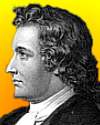 | Blut ist ein ganz besondrer Saft. Blood is a very special juice. |
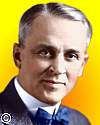 | The fact that Science walks forward on two feet, namely theory and experiment, is nowhere better illustrated than in the two fields for slight contributions to which you have done me the great honour of awarding the the Nobel Prize in Physics for the year 1923. Sometimes it is one foot that is put forward first, sometimes the other, but continuous progress is only made by the use of both—by theorizing and then testing, or by finding new relations in the process of experimenting and then bringing the theoretical foot up and pushing it on beyond, and so on in unending alterations. |
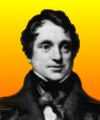 | Considered as a mere question of physics, (and keeping all moral considerations entirely out of sight,) the appearance of man is a geological phenomenon of vast importance, indirectly modifying the whole surface of the earth, breaking in upon any supposition of zoological continuity, and utterly unaccounted for by what we have any right to call the laws of nature. |
| Before you look at today's web page, see if you can answer some of these questions about the events that happened on this day. Some of the names are very familiar. Others will likely stump you. Tickle your curiosity with these questions, then check your answers on today's web page. | |
| Births | |
 | Robert Andrews Millikan, born 22 Mar 186, was an American physicist who was awarded the 1923 Nobel Prize for Physics for “his work on the elementary charge of electricity and on the photoelectric effect.” Millikan's famous oil-drop experiment (1911) was far superior to previous determinations of the charge of an electron. Millikan also studied and in 1925 coined the term now used for certain radiation from outer space. What name did Millikan give the radiation he studied? |
 | Adam Sedgwick, born 22 Mar 1785, was an English geologist who named the geologic period of time, now dated at 570 to 505 million years ago. What is the name he gave this geologic period? |
| Deaths | |
 | William Symington (1763-1831) was a British engineer who developed one of the first practical steamboats, the Charlotte Dundas, commissioned by Lord Dundas and designed for the Forth and Clyde canal. What form of propulsion did the steam engine drive to propel the boat? |
| Events | |
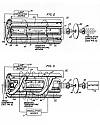 | On 22 Mar of a certain year, the first laser was patented by Arthur Schawlow and Charles Hard Townes, researchers at the Bell Telephone Laboratories. In which decade was the laser patented? |
 | On 22 Mar 1895, the first motion picture shown on a screen was presented to an invited audience, who viewed a film shot specially for the occasion showing workers leaving the inventors’ own factory, which made various photographic products. The workers streamed out, most on foot, some with their bicycles, then followed by those with cars. In what country did this first showing of a film on a screen take place? |
Fast answers for the previous newsletter for March 21: the cell’s use of oxygen • the decade including the year 1978 • cocaine • plutonium • twenties (age 24).
 If you enjoy this newsletter, the website, or wish to offer encouragement or ideas, please send feedback by using your mail reader Reply button.
If you enjoy this newsletter, the website, or wish to offer encouragement or ideas, please send feedback by using your mail reader Reply button. Your click on a Facebook, StumbleUpon, or other social button on the site webpages is also a welcome sign of appreciation. Thank you for using them.
© This newsletter is copyright 2020 by todayinsci.com. Please respect the Webmaster's wishes and do not put copies online of the Newsletter — or any Today in Science History webpage. (If you already have done so, please remove them. Thank you.) Offline use in education is encouraged such as a printout on a bulletin board, or projected for classroom viewing. Online, descriptive links to our pages are welcomed, as these will provide a reader with the most recent revisions, additions and/or corrections of a webpage. For any other copyright questions, please contact the Webmaster by using your mail reader Reply button.
--
If you do not want to receive any more newsletters, Unsubscribe
To update your preferences and to unsubscribe visit this link
Executive Real Estate Business Class
-
"It was like a man with wings. It wasn't like anything you'd see on TV or in a monster movie." ...
About the publisher
Search This Blog
Blog Archive
-
▼
2021
(585)
-
▼
March
(44)
- Newsletter for Wednesday 31 March.
- On This Day for March 30 - Failed assassination at...
- Newsletter for Tuesday 30 March.
- On This Day for March 29 - Dominion of Canada crea...
- Newsletter for Monday 29 March.
- The real history behind new film 'Ammonite', starr...
- On This Day for March 28 - Constantinople renamed ...
- Newsletter for Sunday 28 March.
- On This Day for March 27 - Cleopatra reinstated as...
- Newsletter for Saturday 27 March.
- Catch a break with spring savings
- On This Day for March 26 - Signing of Israel-Egypt...
- Newsletter for Friday 26 March.
- On This Day for March 25 - Robert the Bruce crowne...
- On This Day for March 24 - Exxon Valdez Alaskan oi...
- Newsletter for Wednesday 24 March.
- On This Day for March 23 - Lewis and Clark's retur...
- Newsletter for Tuesday 23 March.
- On This Day for March 22 - Murder at Jamestown, Ya...
- Newsletter for Monday 22 March.
- Roman medicine: 6 ways people stayed healthy
- On This Day for March 21 - Closing of Alcatraz pri...
- Newsletter for Sunday 21 March.
- On This Day for March 20 - AUM subway attack, Maud...
- Newsletter for Saturday 20 March.
- On This Day for March 19 - Iraq War begins, Glenn ...
- Newsletter for Friday 19 March.
- On This Day for March 18 - Election of Chen Shui-b...
- On This Day for March 17 - Vote to end apartheid, ...
- On This Day for March 16 - My Lai Massacre, Caroli...
- On This Day for March 15 - Julius Caesar assassina...
- On This Day for March 14 - Reelection of Vladimir ...
- Newsletter for Sunday 14 March.
- On This Day for March 13 - The planet Uranus disco...
- Newsletter for Saturday 13 March.
- Newsletter for Friday 12 March.
- Newsletter for Thursday 11 March.
- Newsletter for Wednesday 10 March.
- On This Day for March 9 - Battle of the Monitor an...
- Newsletter for Monday 8 March.
- Newsletter for Sunday 7 March.
- On This Day for March 6 - King Tut's tomb opened, ...
- On This Day for March 2 - Moroccan independence de...
- On This Day for March 1 - Establishment of Yellows...
-
▼
March
(44)
-
Blogroll
-
About
HistoryFact










0 comments:
Post a Comment